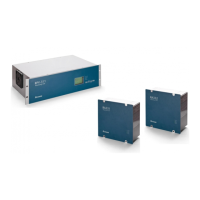The LOCATE button allows user to run the fault location algorithm;
The VIEWER button allows user to open the manual graphical tool to locate the time of the wave fronts in
each terminal;
The LOCATE BY CHART button allows user to use the wave front times located in the graphical tool, to run
the algorithm of fault location;
The KML button allows user to create a KML file, only if the tower’s geographic coordinates have been
provided.
E Location of the fault of terminals A and B.
In order to locate a fault, select a power line configuration and then, select one record of terminal A and the
related record of terminal B is automatically selected. The user can manually exchange the terminal B
record.
Click on the LOCATE button to run the fault location algorithm. If it is possible to locate the fault
automatically, the result is the distance between both terminals A and B and the estimated fault location, and
a "Success fault location" message is declared.
If some problem occurs in the fault location, a "Fault not be locate" message will appear. Possibly the
selected records are not about the same event or the wavefront is less than the threshold set. In this case
change the threshold levels of the location and click the LOCATE button again.
If the fault is still not located, use the graphical tool to identify the times of the wave fronts in the two
terminals manually.
To use the graphical tool, click on the VIEWER button. Each terminal of the transmission line has a record
of traveling waves, which are simultaneously displayed in the graphics window. In each record it is necessary
to position the cursor at the exact moment of the beginning of the wave front, as shown in Figure 80.

